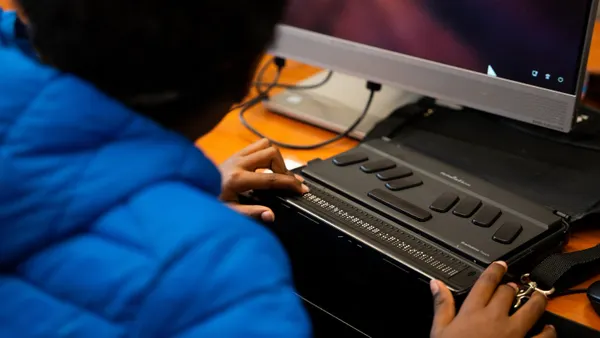Dive Brief:
- Creating a more equitable school culture that embraces anti-racism requires identifying and eliminating microaggressions aimed at people of color, administrator and consultant Jessica Huang writes for Edutopia. Microaggressions are defined as "brief, everyday exchanges that send denigrating messages to individuals because of their group membership," in some cases where the people making the comments are otherwise well-intentioned and unaware of their impact.
- To build a culture that eliminates racism, school leaders should explicitly lay out expectations and values and clearly define microaggressions, Huang writes, adding that school leaders can then implement a shared vision and language emphasizing the school’s anti-racism position.
- "Brave spaces," as opposed to safe spaces, encourage questions, curiosity and growth, she writes. She also suggests lessons that acknowledge contributions made by people of color are a "microaffirmation" that subtly reinforces the notion individuals from traditionally underrepresented groups are important to the advancement of knowledge in a specific field.
Dive Insight:
Developing an anti-racist school culture means re-examining policies and practices through the lens of equity. Grading systems, uniform protocol and lesson plans can all be innately biased. Racism can exist in policies, such as those informing dress code and hair styles, that can make students of color feel like they can’t be authentic at school. For example, using the term “neat” when referring to appropriate types of hair styles sends the message that hairdos often worn by Black students aren’t acceptable, a guide from Teach For America suggests.
The Black Lives Matter movement inspired many educators last summer to reflect and understand what it means to be anti-racist. At Newton North High School in Massachusetts, teachers formed committees on how to dismantle systemic racism that was inherently part of school culture. Student activism is also supported at the school, according to Principal Henry Turner. That support, in turn, creates a culture of trust and opens a dialogue about anti-racism and how to deal with racist incidents.
The Highline School District in Washington state also codified equity into its policies. To create a culture that works toward eliminating systemic racism, the district focused on diversifying its staff so it better represents the student body. Through these efforts, it increased its number of minority teachers by about 30-40%, according to Superintendent Susan Enfield.
But just because there are now more teachers of color, that doesn’t mean the system is set up for them. To solve that problem, district officials are implementing “affinity groups” as part of a feedback system that helps inform the district on how to better serve students and staff from underrepresented backgrounds.
Positive school environments reflect positively on attendance, learning and test scores. But once cultures are established, they are difficult to change. Though administrators can implement a positive culture infrastructure, it ultimately takes buy-in. Student-driven culture, however, can transform schools from the bottom up. These changes can be implemented by student leadership teams, but they require allowing students to add their own thoughts and input.











